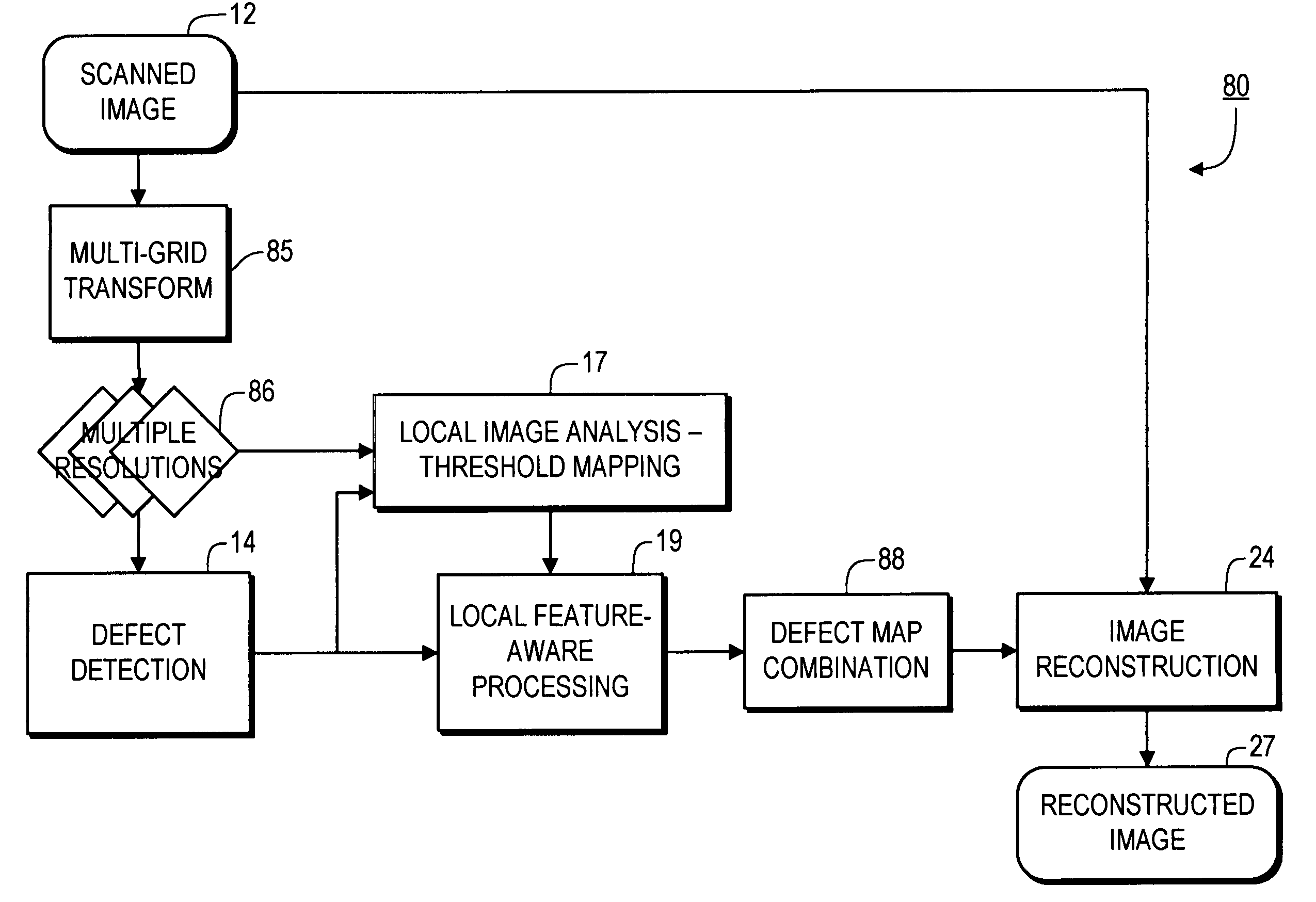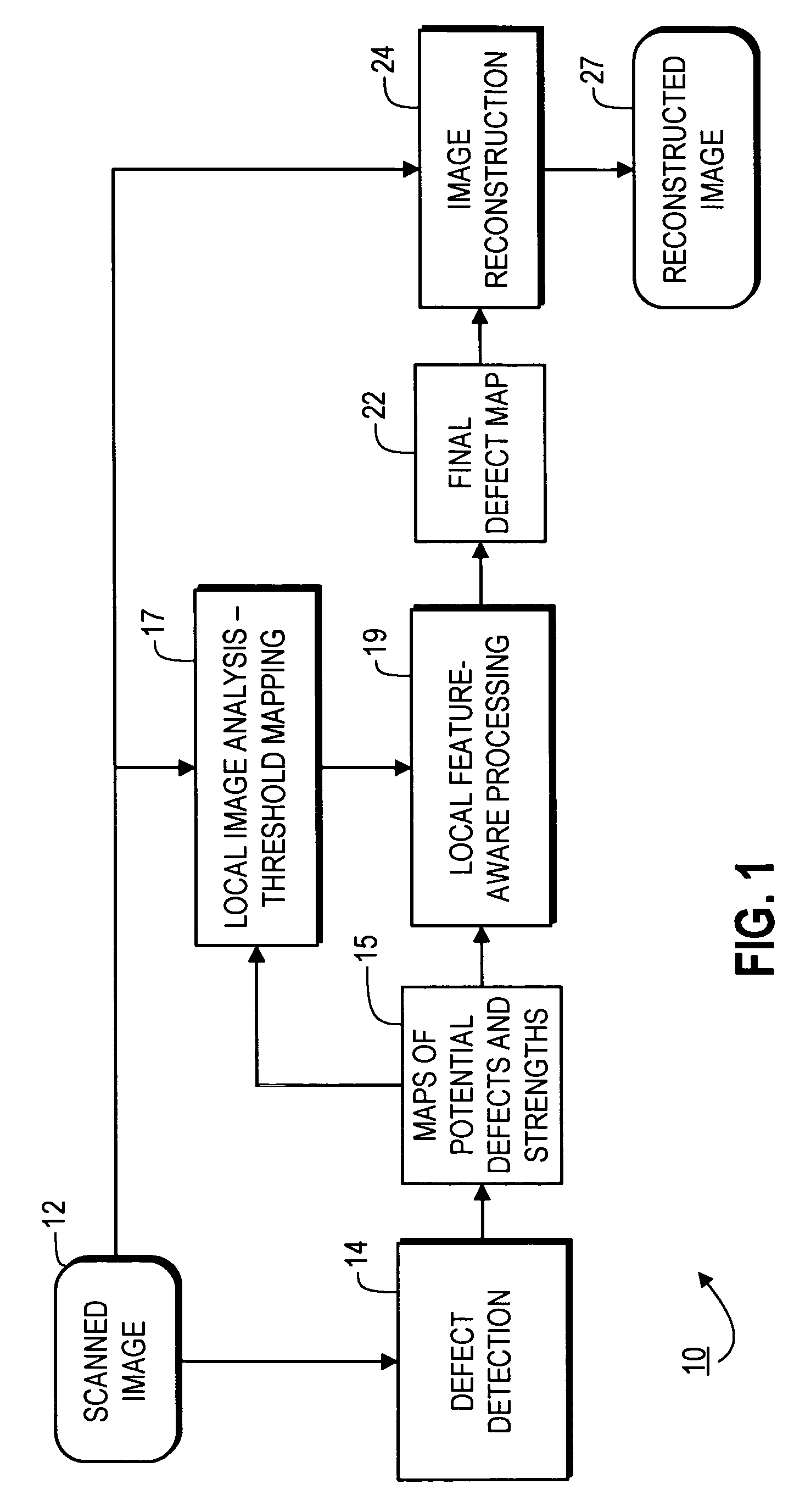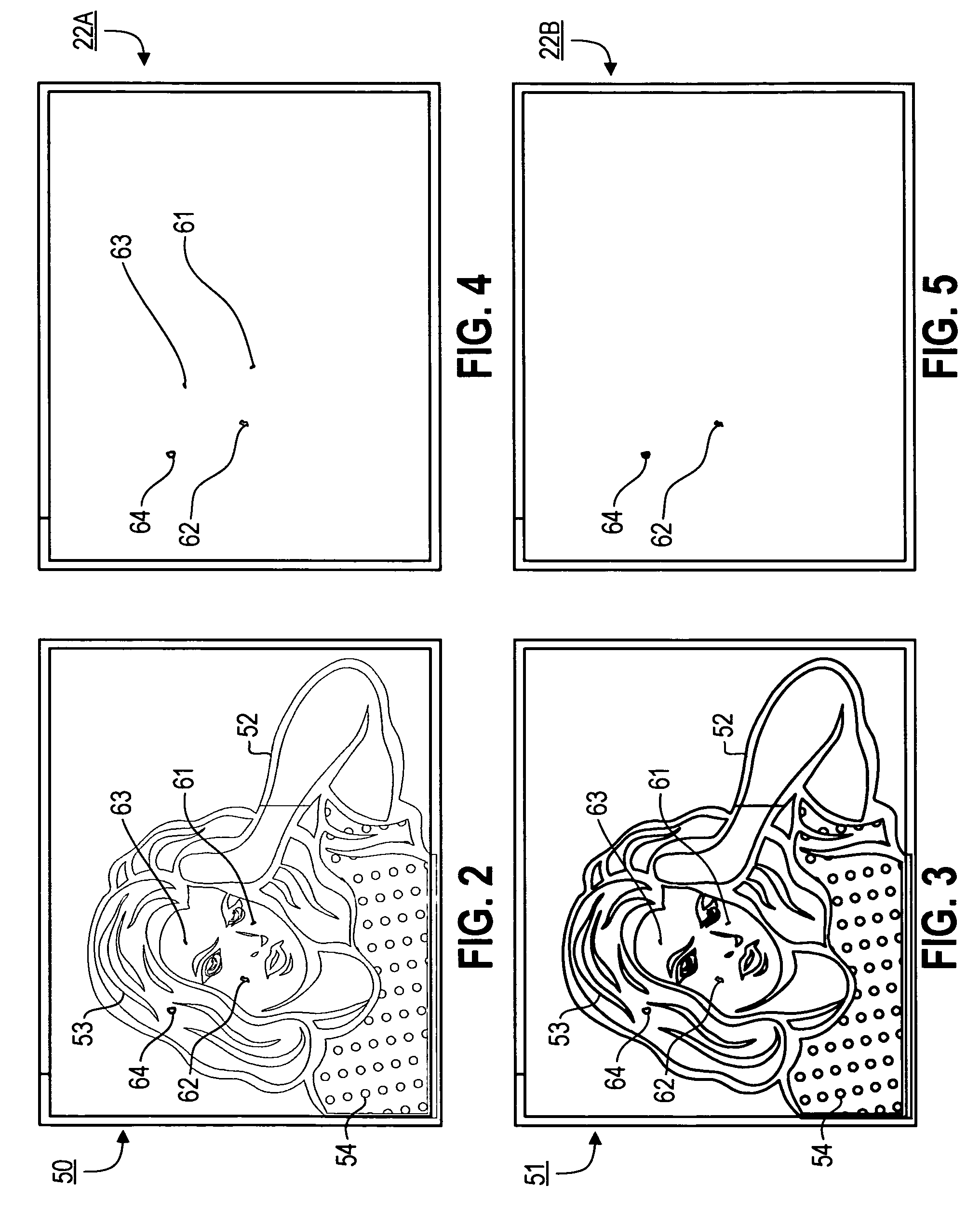Feature-aware image defect removal
a technology of image defect removal and feature awareness, applied in image enhancement, image analysis, instruments, etc., can solve the problems of missing such defects, existing techniques are often poor at isolating low-contrast defects, and often fail to adequately distinguish actual image features from true defects
- Summary
- Abstract
- Description
- Claims
- Application Information
AI Technical Summary
Problems solved by technology
Method used
Image
Examples
Embodiment Construction
)
[0012]FIG. 1 is a block diagram illustrating a system 10 for removing image defects according to a first representative embodiment of the present invention. As shown, an image 12 (e.g., a scanned photograph or any other digital photograph) is input into system 10.
[0013]For purposes of detecting defects, the present invention generally relies on differences in the sharpness of defect edges, as compared to image features. In this regard, a defect in an image may be the result, e.g., of a scratch on the photographic print or of dust, ink or hair on the scanner platen.
[0014]Such defects generally can be represented by a closed shape having a peripheral edge, i.e., a relatively thin line or other-shaped curve separating regions of different pixel values. In other words, the edge marks a boundary where an abrupt change in pixel values occurs. In the context of the actual image, such an edge or boundary often is termed an “image feature”. In the following discussion, edges, whether defect...
PUM
 Login to View More
Login to View More Abstract
Description
Claims
Application Information
 Login to View More
Login to View More - R&D
- Intellectual Property
- Life Sciences
- Materials
- Tech Scout
- Unparalleled Data Quality
- Higher Quality Content
- 60% Fewer Hallucinations
Browse by: Latest US Patents, China's latest patents, Technical Efficacy Thesaurus, Application Domain, Technology Topic, Popular Technical Reports.
© 2025 PatSnap. All rights reserved.Legal|Privacy policy|Modern Slavery Act Transparency Statement|Sitemap|About US| Contact US: help@patsnap.com



